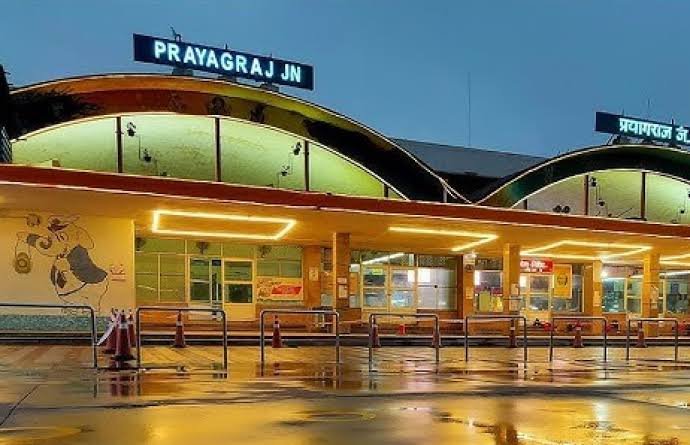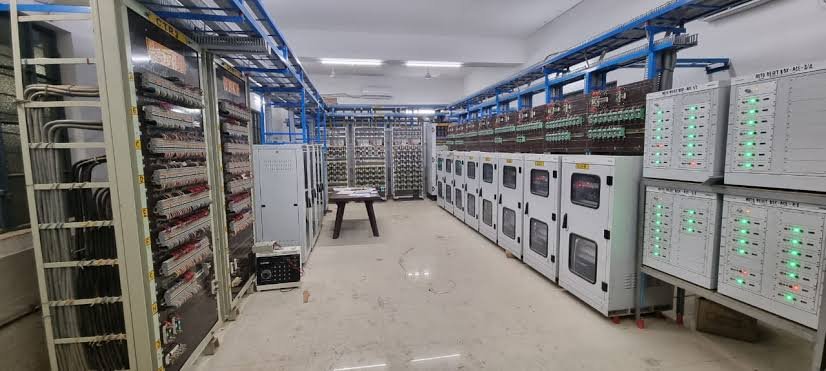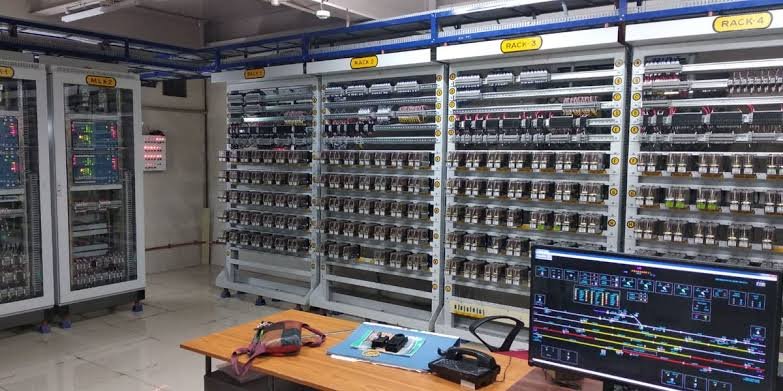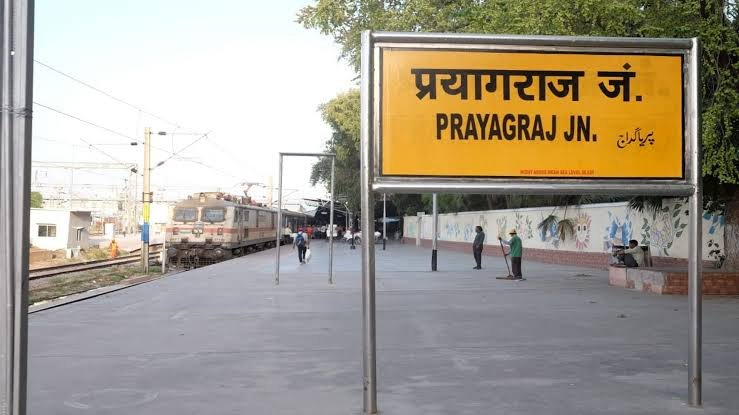Prayagraj Junction will see a total halt in train movements for the very first time since the lockdown that took place in the year 2020. This delay is required in order to facilitate the installation of a contemporary electronic interlocking system, which will improve both the safety and efficiency of freight trains.
Since the nationwide lockdown in 2020, Prayagraj Junction, which is one of the busiest railway terminals in India, is going to experience an eerie quiet for the first time on Sunday, October 20th, 2024. This would be the first time that this has happened. The installation of a cutting-edge electronic interlocking (EI) system is the reason for the silence that will descend upon the junction this Sunday.
While the lockdown that was generated by the pandemic had a lasting impact on the infrastructure and day-to-day activities of the country, the quiet that will descend upon the junction this Sunday is due to a different source. The implementation of this essential improvement is anticipated to bring about a revolution in rail operations, resulting in improved safety and efficiency in the management of train movements.

1. In the first place, let’s take a quick look back at the quiet days of the lockdown.
The day when the nation came to a complete halt, which occurred on March 24, 2020, will forever be ingrained in the minds of millions of Native Americans. Because of the tremendous difficulties brought about by the COVID-19 outbreak, the government was forced to implement a lockdown over the whole country. One of the many elements of life that were impacted was the Indian Railways, which underwent its first complete closure since the company’s foundation. Railway stations, notably the bustling Prayagraj Junction, transformed into ghost towns overnight, with no passengers, no trains, and an ominous calm hanging over the tracks.
Now, more than four years later, a same hush will blanket Prayagraj Junction. However, this time, it’s not due to a pandemic but a scheduled stop for important technology enhancements.
2. The Importance of Electronic Interlocking (EI) Systems
At the heart of the planned shutdown is the installation of an advanced Electronic Interlocking (EI) system, a vital component in modern railway operations. This system, frequently referred to as “EI” in short, plays a crucial role in ensuring the smooth and safe movement of trains across railway networks. But what exactly does this technology include, and why is it so vital for a station like Prayagraj Junction?
2.1 Understanding the Basics of Interlocking
In simple terms, interlocking systems regulate train signals and track points to ensure the safe and coordinated passage of trains. Historically, these systems were mechanical, requiring physical intervention to change rail points and signal trains. Over time, electromechanical systems replaced these, although they still required significant human input.
Electronic Interlocking is the next stage of this technique. It combines powerful electronics and computer networks to automate the process, limiting human error and guaranteeing that trains can run more efficiently and safely through stations, junctions, and signaling locations.
2.2 How EI Enhances Train Operations
- Safety: The most major benefit of an EI system is greater safety. The system prevents competing train movements at intersections, ensuring that no two trains are guided onto the same track. It also prevents signal errors, which can lead to accidents.
- Efficiency: By automating the signaling and point-setting processes, EI systems eliminate delays and assure smoother train operations. This is particularly critical at major intersections like Prayagraj, where many trains are sometimes passing through simultaneously.
- Scalability: EI systems may be simply modified and expanded to handle more trains or new tracks, making them future-proof for increasing rail networks.
3. Why Prayagraj Junction Needs an EI System
Prayagraj Junction is a crucial junction in the Indian Railways network. It acts as a significant transit hub, connecting numerous locations and facilitating the movement of millions of passengers every year. However, with more traffic comes the need for more advanced technologies to control train movements effectively.

3.1 The Challenges of Manual Systems
Before the deployment of EI, Prayagraj Junction relied on Route Relay Interlocking (RRI) systems, which, albeit reliable, were restricted in their ability to handle the expanding number of trains passing through the junction. Manual involvement was often required, leading to delays and, in some circumstances, possible safety issues.
3.2 The Benefits of EI for Prayagraj
The construction of the EI system at Prayagraj Junction is intended to deliver various benefits:
- Reduction in Delays: With automated operation of signals and track switches, trains will be able to proceed through the junction more swiftly and with fewer stops, lowering overall travel times.
- Improved Safety: The EI system will prevent conflicting train movements, considerably reducing the danger of accidents at the junction.
- Better Train Scheduling: The greater efficiency provided by EI will allow for more exact scheduling of trains, avoiding overlaps and ensuring smoother transitions between train movements.
4. The Impact of Sunday’s Shutdown
To permit the installation of the new system, Prayagraj Junction will witness a complete halt in train movements for the entire day on Sunday, 20th October. This is a noteworthy occasion, as the station has not seen such a closure since the lockdown days of 2020.
4.1 Train Diversions and Alternate Routes
In preparation for this shutdown, the North Central Railway (NCR) has made significant alterations to the train schedules:
- Train Diversions: All trains due to travel through Prayagraj Junction on Sunday have been rerouted. Many of these trains will be routed through Cheoki Junction and Subedarganj instead.
- Alternate Departures: Trains that were planned to start from Prayagraj Junction will now originate from nearby stations, including as Prayagraj Chheoki and Subedarganj, for the day. Passengers have been encouraged to check their train itineraries and plan accordingly.
4.2 Major Works at the Junction
The primary task on Sunday will involve dismantling the old Route Relay Interlocking (RRI) system and replacing it with the new Electronic Interlocking system. This process is likely to start early in the morning and continue throughout the day.
The NCR’s Chief Public Relations Officer (CPRO), Shashi Kant Tripathi, stressed the importance of this development, adding that it is a “mega block” that will considerably increase the efficiency of train operations at Prayagraj Junction once completed.
5. Looking Ahead: The Future of Train Operations at Prayagraj Junction
Once the Electronic Interlocking system is completely operational, Prayagraj Junction is projected to see many improvements in its train operations. These enhancements would not only assist the passengers but also add to the overall efficiency of the Indian Railways network.

5.1 Faster Train Movements
One of the most immediate benefits of the new EI system will be the reduction in delays caused by manual signal and point setting. Trains will be able to move more swiftly through the junction, leading to lower travel times for passengers.
5.2 Increased Train Capacity
With the new system in place, Prayagraj Junction will be able to accommodate a higher volume of trains. This is particularly significant given the increasing number of passengers traveling through the station each year. The capacity to manage more trains concurrently will assist ease congestion and improve the overall passenger experience.
5.3 Improved Safety Standards
The EI system’s improved safety features will ensure that train movements at Prayagraj Junction are more secure than ever before. The automated controls will limit the risk of human error, minimizing the chance of accidents and guaranteeing that passengers may travel with peace of mind.
6. Passenger Reactions: A Mix of Inconvenience and Optimism
While the suspension of Prayagraj Junction on Sunday will likely cause difficulty for many passengers, there is a general air of confidence about the long-term benefits of the Electronic Interlocking system. Passengers have expressed understanding of the necessity for modernization and are hopeful that the upgrades will lead to smoother and more reliable train services in the future.
6.1 Inconveniences Faced by Passengers
- Altered Travel arrangements: Many passengers have had to change their travel arrangements due to the diversions and rescheduling of trains. Some have voiced annoyance at the unavailability of direct trains from Prayagraj Junction on Sunday.
- Communication Gaps: While the NCR has taken steps to alert passengers about the changes, several travelers have reported uncertainty regarding the altered train schedules and alternate departure places.
6.2 Positive Outlook on Future Improvements
Despite the immediate hardships, there is considerable support for the modernizing efforts. Passengers know that the long-term benefits of the EI system, including faster and safer train movements, will exceed the immediate interruptions.
7. Conclusion: A New Era for Prayagraj Junction
The installation of the Electronic Interlocking system at Prayagraj Junction marks a big step forward in modernizing India’s railway infrastructure. While the hush that will settle upon the intersection on Sunday may remind some of the lockdown days, this time it is a symbol of progress rather than an epidemic.

With faster, safer, and more efficient rail operations on the horizon, Prayagraj Junction is prepared to enter a new era, acting as a model for other stations across the country. Passengers and railway authorities alike are looking forward to the completion of this critical renovation, which promises to make train travel easier and more enjoyable for everyone.
In the years to come, the investments in contemporary railway technology, such as the Electronic Interlocking system, will continue to modernize India’s railways, helping to meet the growing demands of passengers and ensuring that the country’s transport infrastructure stays world-class.







